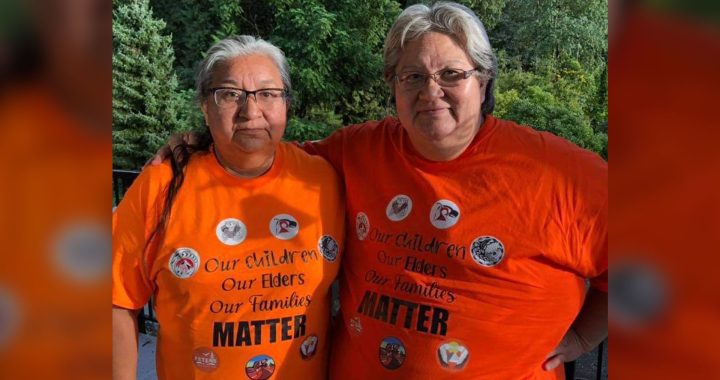Yukon’s Coroner Service (YCS) says so far in 2023, two people who used the Whitehorse Emergency Shelter have died.
According to chief coroner Heather Jones, one person died at the shelter and another occurred at the Whitehorse General Hospital after they were transported there from the shelter.
Jones said YCS would not be aware of deaths that may have occurred at the shelter but were not reportable under the Coroner’s Act.
While Jones could not offer data on how many deaths have occurred at the shelter since it was opened in 2017, she did note five deaths were associated with the shelter in 2022.
Three of those deaths occurred at the shelter and two others occurred at the hospital.
That information followed a May 4 press conference led by representatives of Yukon government, Council of Yukon First Nations (CYFN) and non-profit Connective regarding the shelter at 405 Alexander St.
Yukon government took control of the shelter from the Salvation Army in 2019 and was responsible for its operation until last fall. In October 2022, CYFN and Connective partnered to take over management of the building and its services.
During the conference, officials answered questions regarding two new independent reports which assessed if the shelter was meeting its clients’ and the community’s needs.
Health and Social Services Minister Tracy-Anne McPhee said the shelter “can appear at time like a lightning rod” for people experiencing homelessness and other complex issues.
McPhee acknowledged while the shelter is helping people in need, some issues surrounding its operation will need to be addressed.
“The reports highlight a number of potential and valuable recommendations that are designed to strengthen and further improve operations and lived experience at and around (the shelter),” she said.
“We cannot enhance or improve what we don’t know about.”
A report by Vink Consulting commissioned by Yukon government last summer analyzed existing data and interviews with shelter guests, staff members and community stakeholders.
It found the shelter is meeting the basic needs of guests by providing meals, clothing, showers and harm reduction supplies.
It also found the shelter to be cost effective in many areas.
That includes over $4.2 million valued in avoidance of death from drug toxicity as a result of monitoring and administration of naloxone, as well as a $1.7 million value in increased safety and decreased experiences of violence.
Half of the guests interviewed also reported the shelter has a positive impact on their immediate health and safety, such as it allowing them to access medical care, avoid emergency department and hospital stays, 911 calls, drug overdose and exposure to the elements.
But it also found that some adults experiencing homelessness, especially women, don’t feel safe staying there due to safety concerns, though an average of 10 women stayed at the shelter each night.
“Stakeholders also reported that people trying to stay sober don’t find the Shelter to be a conducive environment for their recovery and try to avoid the Shelter,” the report also states.
Guests experiencing homelessness that did not stay the night said they would be interested in another space with less violence and substance use.
Shadelle Chambers, executive director of CYFN, said a new Indigenous-led women and children’s shelter should help women seeking alternatives to the shelter.
A ground-breaking ceremony for that building is expected in the coming weeks.
“I think that will help support some of the women who are feeling more vulnerable and maybe unsafe at the current shelter,” she said.
Chambers noted it’s been challenging trying to meet the needs of various populations which all use the shelter.
“We keep continuing to advocate for more different types of programs and shelter spaces available,” she said.
Grand Chief Peter Johnston said CYFN and Connective have been able to make “pivotal changes” for those who need to access the shelter, especially as the majority of users are Indigenous.
Johnston noted the shelter now boasts a cultural support worker and the Connective has a sensitive and understanding approach to the clients who stay there.
“That is really at a place of kindness and support where I think we as human beings need,” he said.
Connective CEO Marc Miller said homelessness in the territory is a “community crisis.”
“We have to bring all partners and stakeholders together. We have children living in hotels, we have vulnerable populations, especially during the summer, we’ll see a lot of transient population as well coming to Whitehorse,” he said.
“The shelter is a partner in them, but it’s really going to take the community to address some of the core issues.”
House of Wolf
Another report prepared by Indigenous consultancy firm House of Wolf & Associates analyzed the shelter through a community safety approach.
The reported noted 31 shelter users felt they had been the victim of violence, bullying and harassment.
Other concerns were raised about the lack of structured, supervised activities. Twenty-nine people pointed to an absence of recreational or cultural activities, while others shared that cultural programming was often cancelled, delayed or discontinued due to COVID-19.
All businesses and residents interviewed raised concern about how they were impacted by the disorder caused by the shelter.
“(Twenty per cent) of respondents specifically focused on the visible symptoms of disorder: public intoxication, drug and alcohol paraphernalia as litter, human feces, public sex acts, and violence,” the report states.
Forty-eight per cent of respondents indicated “they experienced fear and anxiety” because of people congregating around the shelter, “some even to the extent that they have changed their personal routines.”
Sixteen out of eighteen business owners also noted they had suffered financial impacts due to the shelter.
Gigi McKee, assistant regional director for Connective’s Yukon region, acknowledged the concerns, and the organization is working collaboratively with nearby businesses to be “good neighbors.”
That includes having communication with nearby businesses and installing camera monitors.
“There’s only so much that we can do as an organization with what we’re operating with and where we’re operating,” she said.
“We do strive to have good community relations with everyone and foster that as well, with all the services that are being access at the facility.
The report provides several recommendations, including de-centralizing services as a means of dissuading people from congregating.
Substance use deaths
Following the press conference, on May 5 YCS released an update regarding a number of deaths in the territory.
Jones said eight deaths in the territory between April 7 and 27 were related to substance use.
Six deaths occurred in Whitehorse and two in Yukon communities.
Half of the deaths were First Nations and ranged between the ages of 22 and 52.
One death was caused by cocaine poisoning, two involved cocaine and alcohol intoxication, three involved cocaine and fentanyl and one involved cocaine, fentanyl and benzodiazepines in the form of etizolam and bromazolam. One death is still pending toxicology results.
“What these findings show is that the source of these illicit drugs is inconsistent, and Yukoners need to be incredibly careful if they choose to use,” the release states.
YCS noted the death linked to bromazolam is the first known finding its investigated.
“Little is currently known about the potency of this drug,” it states. “However, it is expected to have similar potency to alprazolam, which is a prescription medication also known as Xanax, often used to manage anxiety disorders.”
Since January of this year there have been 11 substance use deaths in the territory. Eight of the deaths involved opioids.
There has been 85 opioid-related deaths since April 2016.









